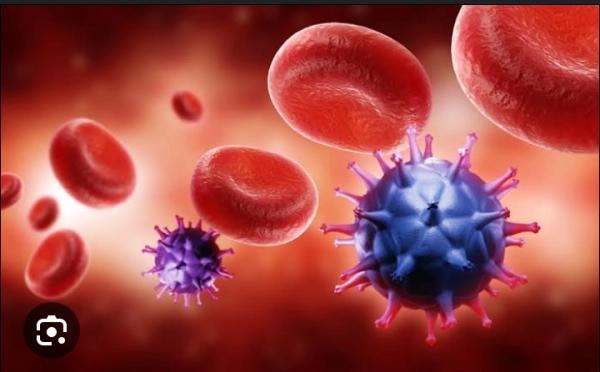Amicable1996
Lab Scientist : I'm A Positive And Resourceful Individual Who Can Execute Difficult Tasks And Doesn't Need To Be Micromanaged. Am A Resolute And Dependable Person With Unwavering Determination To Do Well At My Job And Solve Problems In The Most Autonomous Manner Possible. I Am A Passion Driven Personality With Managerial, Entrepreneurial, Leadership, Communication And Interpersonal Skill.
Articles
14
Followers
4
Connect with me
profile/6213IMG_20211120_124314_487.jpg.webp
Amicable1996

Acid Reflux Drugs And Their Potential Link To Higher Dementia Risk
~3.1 mins read
Acid reflux, also known as gastroesophageal reflux disease (GERD), is a common condition that occurs when stomach acid flows back into the esophagus, causing symptoms such as heartburn, regurgitation, and irritation. To alleviate these symptoms, many individuals turn to medication, specifically proton pump inhibitors (PPIs) and histamine-2 receptor antagonists (H2 blockers), which work by reducing stomach acid production. These medications have provided relief to millions of people, but concerns have arisen about their potential long-term effects, particularly in relation to the risk of developing dementia.
The connection between acid reflux drugs and dementia risk has been the subject of ongoing research, with some studies suggesting a possible link, while others remain inconclusive. It's important to understand the current state of scientific knowledge on this topic to make informed decisions about the use of these medications.
**The Biological Plausibility**
The concern about the link between acid reflux drugs and dementia arises from the fact that these medications can affect the levels of certain chemicals in the brain. Proton pump inhibitors, for example, can impact the levels of amyloid-beta, a protein that accumulates in the brains of individuals with Alzheimer's disease, a common form of dementia. Additionally, these drugs can affect the absorption of certain nutrients, such as vitamin B12 and magnesium, which are important for brain health.
**The Research Landscape**
Several studies have investigated the potential association between acid reflux drugs and dementia, but the results have been mixed. Some studies have reported a small increased risk of dementia among long-term PPI users, while others have found no significant association. The evidence remains inconclusive, and more research is needed to establish a definitive link, if any.
One notable study published in JAMA Neurology in 2016 suggested a possible association between regular PPI use and a higher risk of dementia. However, this study had limitations, including its observational nature, which makes it challenging to establish a causal relationship. Other factors, such as the presence of other health conditions, lifestyle factors, or the underlying severity of GERD, could have influenced the results.
**Understanding the Risks and Benefits**
While the potential link between acid reflux drugs and dementia is a concern, it's essential to consider the broader context. PPIs and H2 blockers can provide significant relief to individuals suffering from the symptoms of acid reflux, which, if left untreated, can lead to complications such as esophageal inflammation, ulcers, and Barrett's esophagus—a condition that increases the risk of esophageal cancer.
Doctors typically prescribe these medications for short-term use to manage acute symptoms, and they may recommend lifestyle modifications and dietary changes to minimize the need for long-term medication. In some cases, however, individuals may require prolonged use of these drugs due to the severity of their condition.
**Individualized Care and Monitoring**
The key to managing GERD and minimizing potential risks is personalized care. If you have been prescribed acid reflux medication, it's important to work closely with your healthcare provider. They can help determine the appropriate duration of treatment based on your specific condition and symptoms. Regular check-ups and discussions about the potential risks and benefits of continuing medication are crucial.
It's also essential to follow a healthy lifestyle to support overall well-being, including maintaining a balanced diet, managing weight, staying physically active, and avoiding smoking and excessive alcohol consumption. These factors can contribute to both digestive health and cognitive function.
**Conclusion**
The potential link between acid reflux drugs and dementia risk is an area of ongoing research, and the available evidence is not yet definitive. While there have been some studies suggesting a possible association, more research is needed to establish causality and understand the mechanisms underlying any potential connection.
For individuals with GERD, the use of acid reflux medication should be based on a careful assessment of the risks and benefits, and it's important to discuss any concerns with a healthcare provider. Additionally, lifestyle modifications that promote digestive health and overall well-being can play a significant role in reducing the need for long-term medication.
As the scientific community continues to study this topic, staying informed and proactive about your health is essential. By working collaboratively with medical professionals and making informed decisions, you can effectively manage GERD while prioritizing your cognitive health.
profile/6213IMG_20211120_124314_487.jpg.webp
Amicable1996

Infections In Women: Understanding, Preventing, And Managing Health Risks
~2.8 mins read
Introduction:
Infections have long been a significant health concern for women across the globe. From reproductive tract infections to urinary tract infections, women are often more susceptible due to their unique anatomical and hormonal characteristics. This article delves into the various types of infections that affect women, their causes, symptoms, preventive measures, and treatment options.
1. Common Types of Infections in Women:
a. Urinary Tract Infections (UTIs): UTIs are one of the most prevalent infections among women. They occur when bacteria enter the urethra and travel up to the bladder. Symptoms include frequent urination, burning sensation, and lower abdominal pain.
b. Yeast Infections: Caused by an overgrowth of Candida fungus, yeast infections commonly affect the vaginal area. Symptoms include itching, burning, and a thick, white discharge.
c. Bacterial Vaginosis (BV): BV results from an imbalance of bacteria in the vaginal area. It's characterized by a foul-smelling discharge and itching. While not considered a sexually transmitted infection (STI), it can increase the risk of contracting STIs.
d. Sexually Transmitted Infections (STIs): These infections, such as chlamydia, gonorrhea, and herpes, can affect both men and women. However, some STIs can have more severe consequences for women, including infertility and cervical cancer.
2. Causes and Risk Factors:
Several factors contribute to the susceptibility of women to infections:
- Anatomical Factors: The shorter urethra in women makes it easier for bacteria to enter the urinary tract.
- Hormonal Changes: Fluctuations in hormone levels during menstruation, pregnancy, and menopause can alter the vaginal environment and increase infection risk.
- Sexual Activity: Sexual intercourse can introduce bacteria into the urinary tract and vaginal area.
- Hygiene Practices: Incorrect hygiene practices, such as douching, can disrupt the natural balance of bacteria in the vagina.
- Weakened Immune System: Certain medical conditions and medications can weaken the immune system, making women more prone to infections.
3. Prevention Strategies:
a. Hygiene: Maintain proper genital hygiene by using mild soap and water for cleansing. Avoid douching, as it can disturb the vaginal pH and increase infection risk.
b. Urination Habits: Urinate before and after sexual intercourse to help flush out bacteria from the urinary tract.
c. Clothing: Wear breathable cotton underwear and avoid tight-fitting clothing to prevent moisture buildup in the vaginal area.
d. Sexual Health: Practice safe sex using barrier methods like condoms to reduce the risk of STIs. Limit the number of sexual partners to decrease exposure to infections.
e. Diet and Hydration: Staying hydrated and maintaining a balanced diet can support a healthy immune system, aiding in infection prevention.
4. Diagnosis and Treatment:
a. Diagnosis: Healthcare providers use various methods to diagnose infections, including physical exams, lab tests, and cultures of vaginal or urine samples.
b. Treatment: Treatment depends on the type of infection. UTIs are commonly treated with antibiotics, while yeast infections may require antifungal medications. Bacterial vaginosis is typically treated with antibiotics as well.
c. STIs: Early detection and treatment of STIs are crucial. Some STIs can be cured with antibiotics, while others are managed with antiviral medications. Regular STI screening is recommended, especially for sexually active individuals.
5. Seeking Medical Attention:
Women should consult a healthcare provider if they experience symptoms of an infection. Self-diagnosis and self-medication can lead to complications or ineffective treatment.
Conclusion:
Infections in women are a significant health concern, often influenced by anatomical, hormonal, and behavioral factors. Understanding the types of infections, their causes, and preventive measures empowers women to take control of their health. With proper hygiene, safe sexual practices, and timely medical attention, many infections can be prevented or effectively managed, promoting overall well-being and quality of life.
Advertisement

Link socials
Matches
Loading...
